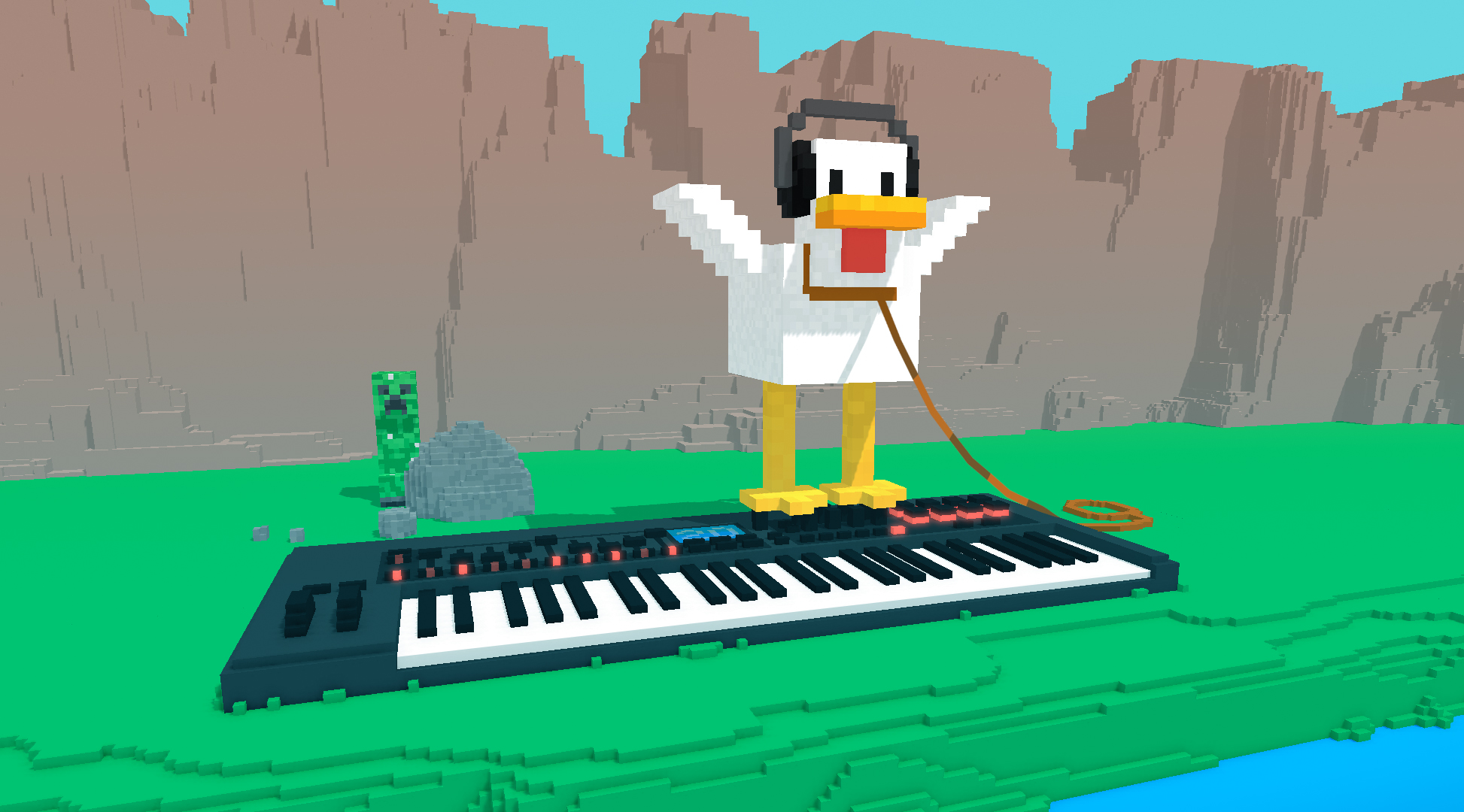
- #Minecraft sound effects meaning full
- #Minecraft sound effects meaning code
- #Minecraft sound effects meaning free
To remedy this, we have produced a program which neatly creates a JSON file for you – the JSONator! Simply double click JSONator.exe to open the program, then input the location of the folder where all of your sound files are stored and it will create the JSON for you. JSONs can be written by hand, but they can be a little complicated to understand, and in a game as big as Templars of Hyrule which has over 619 custom sounds this process can quickly become a chore. What is not so simple is the layout of the JSON. Note that any files not sorted into specific folders can only be controlled by the master volume slider. Simple! In order to associate your sounds with one of the eight volume sliders, simply create a folder called either “ambient”, “weather”, “player”, “neutral”, “hostile”, “block”, “record” or “music” within your Sound Effects folder. In Mental Block Gaming’s maps, for example, all character voiceovers are controlled by the “players” volume slider. With the JSONator v2, it is now possible to also associate each of your sound effects with a volume slider within Minecraft. In other words, if you type “bigexplosion” into the game, it knows that you are talking about your bigexplosion.ogg file. This JSON file gives Minecraft a new command which can play your custom sound, and also tells it what keyword should be used to play this new sound.
#Minecraft sound effects meaning code
(Note: if you feel uncomfortable using the JSONator, you can write the code by hand using this tutorial.) This custom-built program produces a special file called “sounds.json” that the game uses to read your custom sounds. It is worth noting that extremely long custom sounds will often cause the player’s Minecraft to crash, so try to keep sound files under a minute long.įor the next part of this process, we will need to use the JSONator. For now, let’s call this folder “Sound Effects”.
#Minecraft sound effects meaning full
ogg file to say1, paste it into the folder, and it’s in place! For a full list of default Minecraft sound filenames and locations, check out the Minecraft wiki.īut what if we want to add a completely new sound, instead of simply replacing one? Once you have converted all of the sound files that you want to use into the. So, if a zombie groan was what you wanted to replace, navigate to > assets > minecraft > sounds > zombie and replace say1.ogg with your zombie sound. To add this sound to your game, all you need to do is replace Minecraft’s default sound with your new sound in your resource pack. NOW you can save your sound effect in its new format! Before you hit the save button, select the “Save as type” dropdown bar and select Ogg Vorbis Files from the list. Instead of “Big Explosion!” for example, use “bigexplosion”. It is best to choose a name that is written in all lower case, does not use any special characters, such as exclamation marks, commas, or asterisks, and does not contain any spaces. (Note: We do not want to use “Save project…” here.) Choose a name for your sound.

Navigate to “File” -> “Export…” to save your sound in its new format. A visual representation of the sound should now be visible on the screen. In Audacity, go to “File” -> “Open…” and select your sound file. We will be using Audacity to convert our sound files, which are usually. If your resource pack is equipped in game, it will play your sound instead of Minecraft’s default sound. If you want to simply replace the game files with sounds of your own, you can overwrite the files used in the resource pack with a sound file of your own with the same name and format. When multiple resource packs are selected, the top resource packs take priority. If you’re having trouble running it, try installing Microsoft’s Visual F# 3.1.2 here.) (More information about the creation of the JSONator can be found here. We will be using this example resource pack for demonstration purposes.

#Minecraft sound effects meaning free
This tutorial carefully guides map makers through the normally complicated process of adding sounds to resource packs to make your games even better, either by replacing default Minecraft sounds or by adding your own library of sounds to the game!įor this tutorial, we will require Audacity, an excellent audio editing program, and Mental Block Gaming’s own program, the JSONator, both of which are free and easy to use! Of course, we will also need some sound files to work with. This functionality grants Minecraft Adventure Map makers the ability to put sound effects and voice-acting into their games. Ever wanted to replace the default door sound with a long creaking effect for your horror adventure map? Or add fast-paced music to your parkour map? Or add a countdown sound effect for your multiplayer racing map? Well now you can!Īs of Minecraft 1.7, it is possible to add custom sounds to your game through the use of resource packs.


 0 kommentar(er)
0 kommentar(er)
